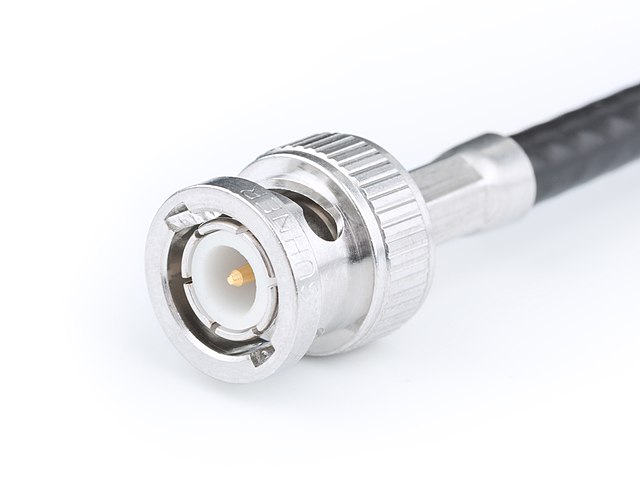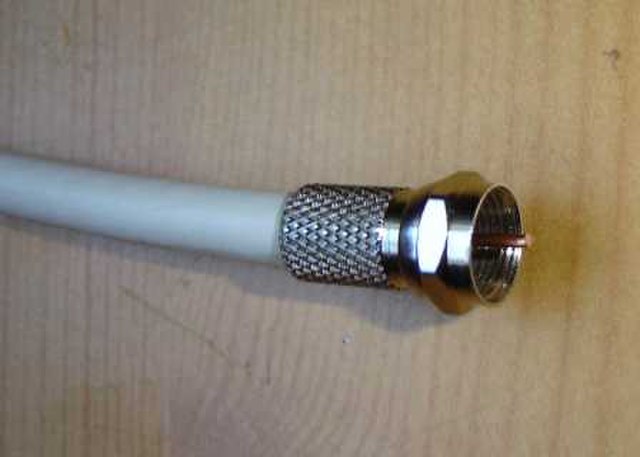The BNC connector is a miniature quick connect/disconnect radio frequency connector used for coaxial cable. It is designed to maintain the same characteristic impedance of the cable, with 50 ohm and 75 ohm types being made. It is usually applied for video and radio frequency connections up to about 2 GHz and up to 500 volts. The connector has a twist to lock design with two lugs in the female portion of the connector engaging a slot in the shell of the male portion. The type was introduced on military radio equipment in the 1940s and has since become widely applied in radio systems, and is a common type of video connector. Similar radio-frequency connectors differ in dimensions and attachment features, and may allow for higher voltages, higher frequencies, or three-wire connections.
Male 50 ohm BNC connector
Rear of a video switcher with an array of BNC connectors
BNC tee connectors with resistive load terminators
BNC connectors. From left to right: 75 Ω female, 75 Ω male, 50 Ω female, 50 Ω male.
Coaxial cable, or coax, is a type of electrical cable consisting of an inner conductor surrounded by a concentric conducting shield, with the two separated by a dielectric ; many coaxial cables also have a protective outer sheath or jacket. The term coaxial refers to the inner conductor and the outer shield sharing a geometric axis.
RG-59 flexible coaxial cable composed of: Outer plastic sheath Woven copper shield Inner dielectric insulator Copper core
In his 1880 British patent, Oliver Heaviside showed how coaxial cable could eliminate signal interference between parallel cables.
A male F-type connector used with common RG-6 cable
A male N-type connector








